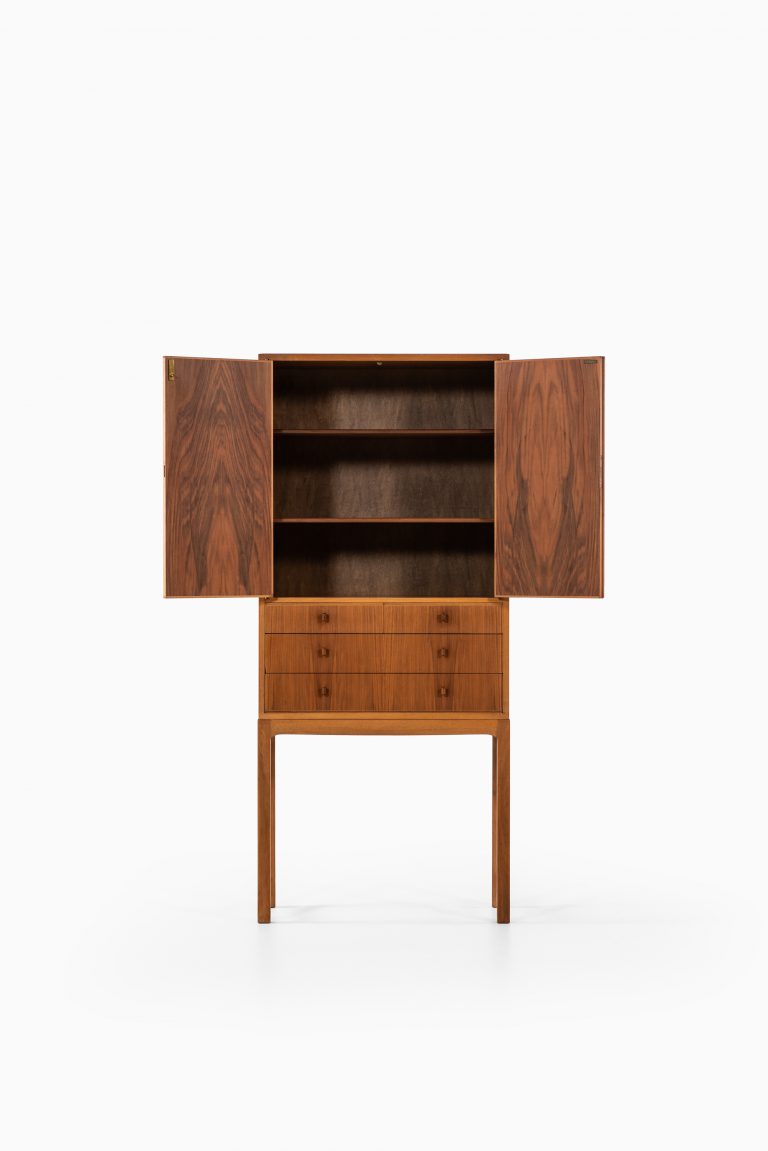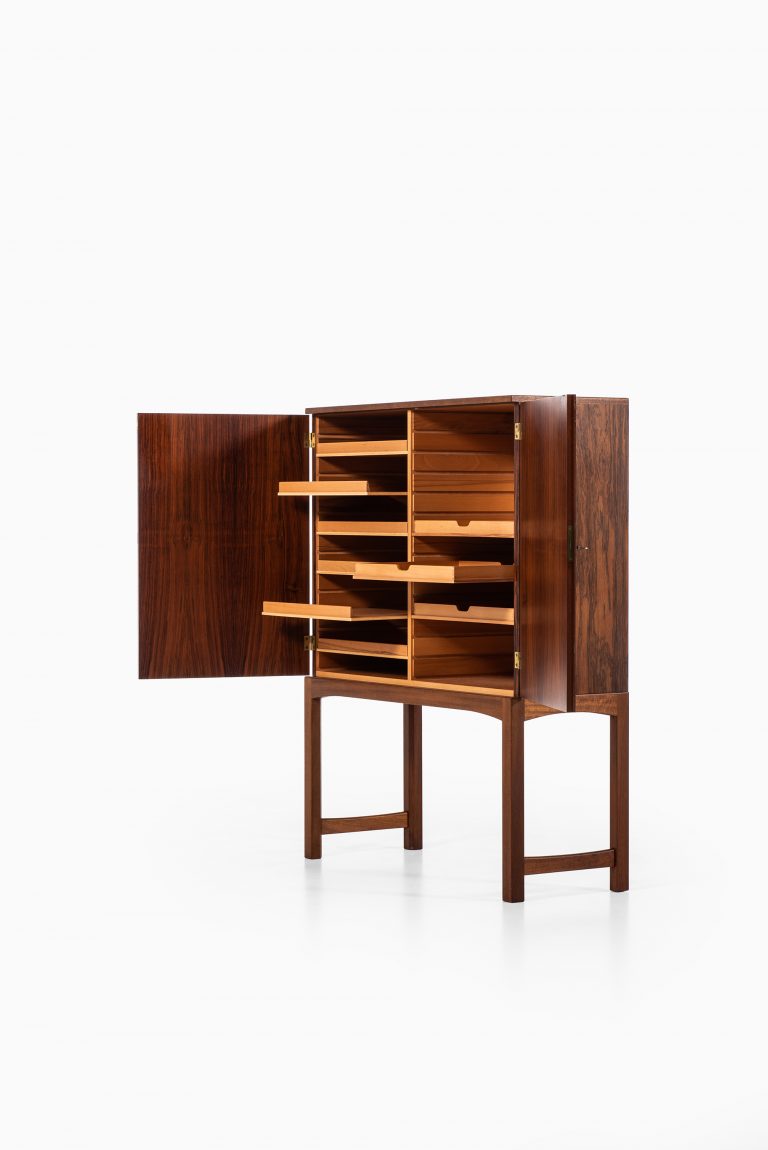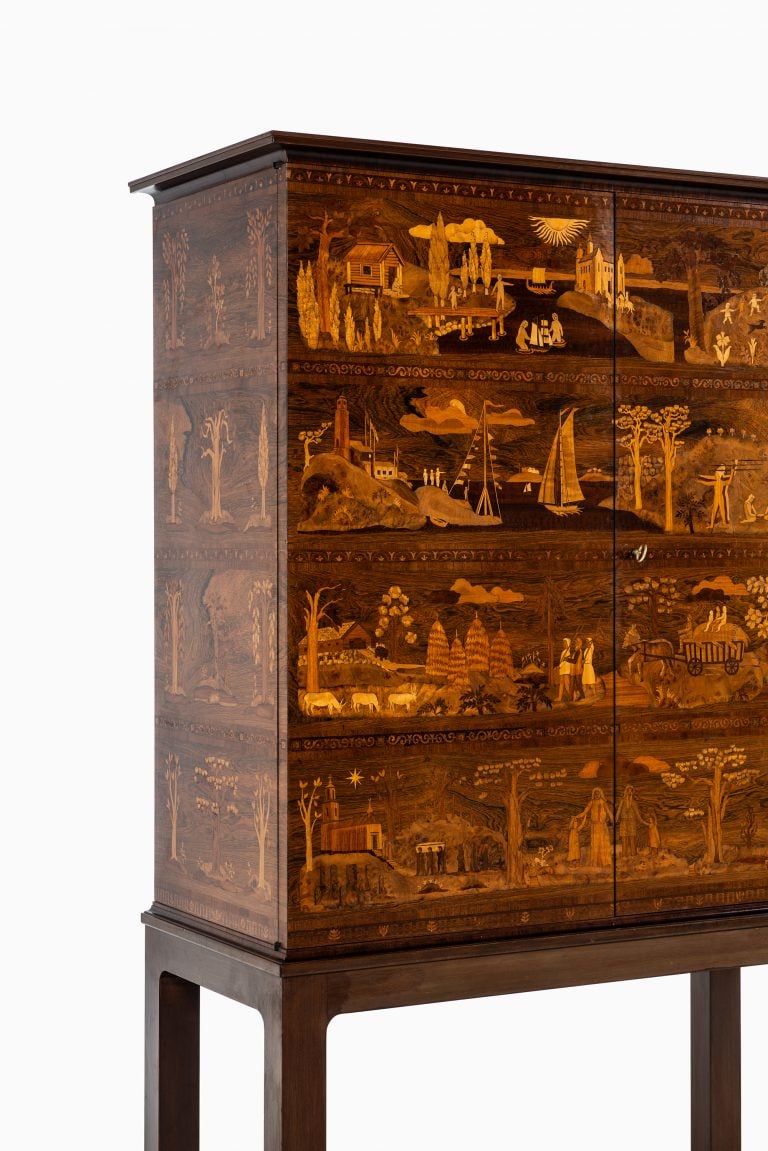Carl Malmsten cabinet
This very rare master cabinet was designed by Carl Malmsten in the 1930s and produced by Hjalmar Wikström Möbelsnickare in Sweden. It represents one of Malmsten’s most refined examples of Swedish craftsmanship, combining functional clarity with decorative detailing characteristic of his work during the interwar period.
The cabinet is constructed in walnut with brass fittings and details in chamois leather. The exterior features vertically fluted doors framed within chamfered edges, creating a rhythm of light and shadow across the surface. Beneath the main doors, a carved frieze displays stylized organic motifs, emphasizing Malmsten’s affinity for integrating traditional Swedish decorative elements within modern proportions. The cabinet stands on tapered legs joined by a shaped stretcher, adding stability and elegance to the composition.
The interior reveals an advanced level of craftsmanship and material selection. The doors are inlaid with veneered squares of walnut burl, framed with lighter gridwork, producing a striking visual contrast. Inside, adjustable shelving, fitted drawers, and compartments provide versatile storage, including trays lined in chamois leather, reflecting the luxury and practicality intended for such a piece. The brass hardware adds a subtle yet refined accent, harmonizing with the warm walnut tones.
Carl Malmsten was a leading figure in Swedish design, advocating for craftsmanship, tradition, and natural materials during a period of increasing industrialization. His furniture often bridges neoclassical influences with functional modern design, and pieces such as this master cabinet demonstrate his commitment to creating timeless works that balance ornament with utility. Hjalmar Wikström’s workshop, known for producing high-quality custom furniture, executed the design with meticulous attention to detail, exemplifying Swedish cabinetmaking at its peak.
The cabinet is preserved in good vintage condition with small signs of usage and a rich patina that testifies to its age. The surfaces, carvings, and interior fittings remain intact, highlighting both its historical significance and enduring quality.
Dimensions: width 115 cm (45.3 in), depth 46 cm (18.1 in), height 181.5 cm (71.5 in)
Dimensions (cm) | W: 115 / D: 46 / H: 181.5 |
| Producer | Hjalmar Wikström |
| Decade | 1930s |
| Country | Sweden |
| Style | Art Deco, Scandinavian Modern |
| Material | Brass, Leather, Walnut |
| Designed in | 1930s |
| Item Number | 116393 |
Carl Malmsten
Carl Malmsten (1888 – 1972)
Carl Malmsten, a prominent furniture designer and educator associated with Swedish modernism, enjoyed immense popularity for his shapely sofas and armchairs in luscious color palettes. Malmsten believed that...




















